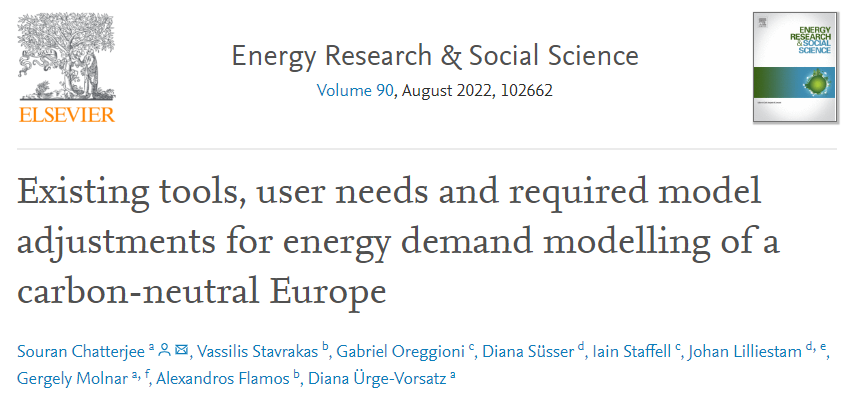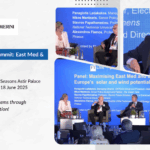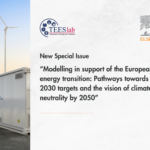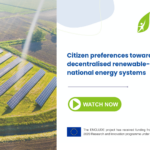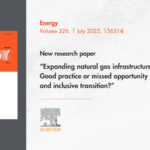Our new Open Access scientific paper entitled “Existing tools, user needs and required model adjustments for energy demand modelling of a carbon-neutral Europe” has been published in the Elsevier’s Energy Research & Social Science journal. The publication was produced by Dr. Souran Chatterjee, Dr. Vassilis Stavrakas, Dr. Gabriel D. Oreggioni, Dr. Diana Süsser, Dr. Iain Staffell, Prof. Dr. Johan Lilliestam, Gergely Molnar, Prof. Dr. Alexandros Flamos, Prof. Dr. Diana Ürge-Vorsatz in the context of the European Commission-funded Horizon 2020 SENTINEL project.
The reduction of the energy demand will accelerate the energy transition process and facilitate the achievement of the European Union’s target for climate neutrality by 2050. Ensuring the relevance of energy demand models to the needs of policymakers and other end-users is critical to support efficient decision-making processes.
To this end, our new paper examines key user needs for energy demand modelling in the context of the European vision of climate neutrality by 2050 using a multi-method approach based on empirical and desk research.
In particular, through an online survey and a series of interviews and workshops, user needs of different stakeholder groups were identified, highlighting the direction towards which energy demand models need to be improved so that they are relevant to their users.
Through a detailed review of existing energy demand models, a full understanding of the key characteristics and capabilities of existing tools was provided, while, their limitations and gaps were, also, identified.
The findings of the scientific article show that classical demand-related questions remain important to model users, while most of the existing tools are already able to answer these questions. Furthermore, an important outcome is that some of the user needs related to sectoral demand modelling, dictated by the latest policy developments, are under-researched and are not addressed by existing tools.
You can read the full Open Access publication here!

